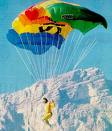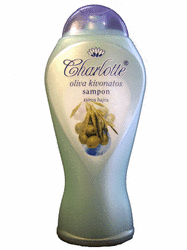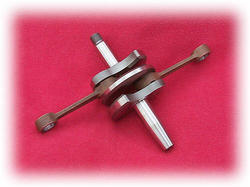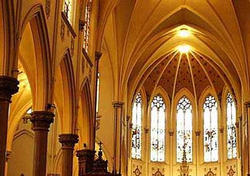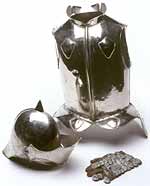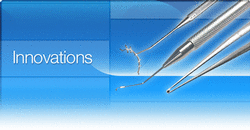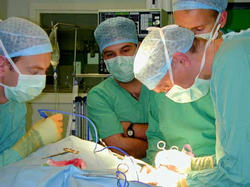Muslim Innovation
www.islamicpropagation.faithweb.com
.
Coffee
The story goes that an Arab named Khalid was tending his goats in
the Kaffa region of southern Ethiopia, when he noticed his animals
became livelier after eating a certain berry. He boiled the berries
to make the first coffee. Certainly the first record of
the drink is of beans exported from Ethiopia to Yemen where Sufis
drank it to stay awake all night to pray on special occasions. By
the late 15th century it had arrived in Mecca and Turkey from where
it made its way to Venice in 1645. It was brought to England in 1650
by a Turk named Pasqua Rosee who opened the first coffee house in
Lombard Street in the City of London.
The Arabic qahwa became the Turkish kahve then the Italian caffé and then English coffee.
Pin-Hole Camera
The ancient Greeks thought our eyes emitted rays, like a laser,
which enabled us to see. The first person to realise that light
enters the
eye, rather than leaving it, was the 10th-century Muslim
mathematician, astronomer and physicist Ibn al-Haitham. He invented
the first pin-hole camera after noticing the way light came through
a hole in window shutters. The smaller the hole, the better the
picture, he worked out, and set up the first Camera Obscura (from
the Arab word qamara for a dark or private room). He is also
credited with being the first man to shift physics from a
philosophical activity to an experimental one.
Parachute
astronomer, musician and engineer named Abbas ibn Firnas made
several attempts to construct a flying machine. In 852 he jumped
from the minaret of the Grand Mosque in Cordoba using a loose cloak
stiffened with wooden struts. He hoped to glide like a bird. He
didn't. But the cloak slowed his fall, creating what is thought to
be the first parachute, and leaving him with only minor injuries. In
875, aged 70, having perfected a machine of silk and eagles'
feathers he tried again, jumping from a mountain. He flew to a
significant height and stayed aloft for ten minutes but crashed on landing. Concluding, correctly, that it was because he had not given his
device a tail so it would stall on landing.
Baghdad international airport and a crater on the Moon are named
after him.
.
Shampoo
Washing and bathing are religious requirements for Muslims, which is
perhaps why they perfected the recipe for soap which we still use
today. The ancient Egyptians had soap of a kind, as did the Romans
who used it more as a pomade. But it was the Arabs who combined
vegetable oils with sodium hydroxide and aromatics such as thyme oil. One of the Crusaders' most striking characteristics, to Arab nostrils, was that they did not wash. Shampoo was introduced to England by a Muslim who opened Mahomed's Indian Vapour Baths on Brighton seafront in 1759 and was appointed Shampooing Surgeon to Kings George IV and William IV.
Shaft
motion and is central to much of the machinery in the modern world,
not least the internal combustion engine. One of the most important
mechanical inventions in the history of humankind, it was created by
an ingenious Muslim engineer called al-Jazari to raise water for
irrigation. His 1206 Book of Knowledge of Ingenious Mechanical
Devices shows he also invented or
refined the use of valves and pistons, devised some of the first
mechanical clocks driven by water and weights, and was the father of
robotics. Among his 50 other inventions was the combination lock.
Refinement
their boiling points, was invented around the year 800 by Islam's
foremost scientist, Jabir ibn Hayyan, who transformed alchemy into
chemistry, inventing many of the basic processes and apparatus still
in use today - liquefaction, crystallisation, distillation,
purification, oxidisation, evaporation and filtration. As
well as discovering sulphuric and nitric acid, he invented the
alembic still, giving the world intense rosewater and other perfumes
and alcoholic spirits (although drinking them is haram, or
forbidden, in Islam). Ibn Hayyan emphasised systematic
experimentation and was the founder of modern chemistry.
Pointed Arch
an invention borrowed from Islamic architecture. It was much
stronger than the rounded arch used by the Romans and Normans, thus allowing the building of bigger, higher, more complex and grander
buildings. Other borrowings from Muslim genius included ribbed
vaulting, rose windows and dome-building techniques. Europe's
castles were also adapted to copy the Islamic world's - with arrow
slits, battlements, a barbican and parapets. Square towers and keeps
gave way to more easily defended round ones. Henry V's castle
architect was a Muslim.
Metal Armour
layer of insulating material in between. It is not clear whether it
was invented in the Muslim world or whether it was imported there
from India or China. But it certainly came to the West via the
Crusaders. They saw it used by Saracen warriors, who wore
straw-filled quilted canvas shirts instead of armour. As well as a
form of protection, it proved an effective guard against the chafing
of the Crusaders' metal armour and was an effective form of
insulation so much so that it became a cottage industry back home in colder climates such as Britain and Holland.
Surgery
Many modern surgical instruments are of exactly the same design as
those devised in the 10th century by a Muslim surgeon called
al-Zahrawi. His scalpels, bone saws, forceps, fine scissors for eye
surgery and many of the 200 instruments he devised are recognisable
to a modern surgeon.It was he who discovered that catgut used for internal stitches dissolves away naturally (a discovery he made when his monkey ate his lute strings) and that it can be also used to make medicine capsules. In the 13th century, another Muslim medic named Ibn Nafis described the circulation of the blood, 300 years before William
Harvey discovered it. Muslims doctors also invented anaesthetics of opium and alcohol mixes and developed hollow needles to suck cataracts from eyes in a technique still used today.


